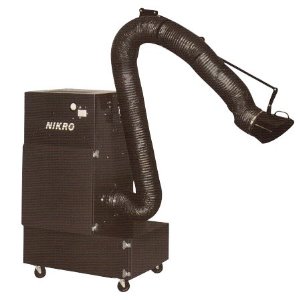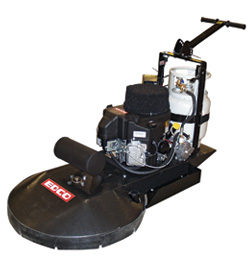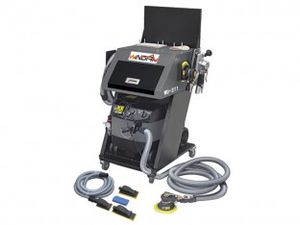|
|
| Line 1: |
Line 1: |
| [[Category:Filtration]]{{Knoppen}} | | [[Category:Filtration]]{{Knoppen}} |
| <noinclude><!------------------------------------------------
| | [[File:Dust_Extraction_Equipment_01.jpg|thumb|right|Dust Extraction Equipment]] |
| * READ THIS FIRST
| | [[File:Dust_Extraction_Equipment_02.jpg|thumb|right|Home Dust Extraction Equipment]] |
| * Only edit this page if you can improve the content.
| | [[File:Dust_Extraction_Equipment_03.jpg|thumb|right|Office Dust Extraction Equipment]] |
| * Improper use of this page will lead to permanent banning.
| | The stationery '''dust extraction equipment''' offers a cost effective solution to a multitude of applications in the workplace, where the efficient removal of dust and small particles is required. The dust Filters are designed specifically for applications where dry dust is generated including welding, grinding, polishing, laser and plasma cutting operations. |
| * Please do not edit the sponsored link on the top right corner.
| |
| * Please start editing this page after the /noinclude
| |
| * -------------------------------------------------></noinclude>
| |
| [[File:Extractors_01.JPG|thumb|right|A view of the break-action of a typical double-barrelled shotgun, with the action open and the scalloped triangularly shaped extractor visible at the base of the two barrels. The opening lever and the safety catch can also be clearly seen.]] | |
| [[File:Extractors_02.jpg|thumb|right|A view showing a flip-up barrel and lack of extractor on a Beretta Bobcat semi-automatic pistol]] | |
|
| |
|
| An '''extractor''' is a part in a firearm that serves to remove brass cases of fired ammunition after the ammunition has been fired. When the gun's action cycles, the extractor lifts or removes the spent brass casing from the firing chamber.
| |
|
| |
|
| | ==Advantages== |
| | ===Easy to operate and maintain=== |
| | All dust extraction equipment is easy to operate, simple to maintain and are easily sited. Quick access to the filter elements allows for ease of cleaning and maintenance, ensuring efficient operation and longevity of the system. |
|
| |
|
| ==Overview==
| |
| Extractors can be found on bolt action, lever-action, pump action, semi-automatic and fully automatic firearms. Break-action shotguns, such as those with single or double barrels, typically have an extractor that operates when the action is broken open. Extractors are also found on revolvers, removing cases either singly (as in a fixed-cylinder single action revolver) or all at once (as in a double action revolver with a swing-out or top-break cylinder). For rimless cases, an extractor groove in the ammunition may serve as the point from which the extractor works. For rimmed cases, the rim of the cartridge most commonly serves as the point from which the extractor works. Not all firearms have extractors.
| |
|
| |
|
| In bolt action, lever-action, pump action, and semi- or fully automatic firearms, extractors typically work in conjunction with ejectors to remove completely a fired, empty cartridge case from the weapon. The extractor removes the cartridge case from the chamber, essentially pulling the case to the rear. At some point in the rearward travel, the case typically makes contact with the ejector, which "kicks" the expended case out of the firearm, making room for an unfired cartridge to be loaded.
| | ===Installation options to suit all applications=== |
| | Mobile dust extraction units are ideal for frequently changing extraction locations within the plant. Due to their compact design they are easy to move and provide flexibility in any operation. Static systems provide extraction solutions for larger machines or manufacturing workshops, with central extraction systems up to 100,000m3h. |
|
| |
|
| Some firearms have no ejectors, only extractors, requiring the user to manually remove spent cartridges. In this situation, the extractor pulls the case out of the chamber far enough to give the user a good grip on the cartridge, but not far enough to remove the entire cartridge from the chamber. This situation is encountered on some single shot rifles, single shot pistols such as the Thompson Contender with its break-action design, and on some break-action single and double barrel shotguns.
| |
|
| |
|
| Some very early blowback pistols used ammunition with no rim or extractor groove on the cartridge cases (e.g., 5mm Bergmann), and such pistols therefore lacked extractors. The spent case was forced out of the chamber by recoil, and was subsequently ejected. As this system did not provide for easy clearance of misfires, it was not very successful, especially for self-defense handguns needing to be cleared quickly and reloaded in the event of a cartridge primer malfunction. Nonetheless, there are examples of contemporary modern semi-automatic pistols that do not have extractors even to this day, such as the Beretta Bobcat, Beretta Model 21A, and clones of the Beretta designs such as the Taurus PT22 that are successful. These modern pistols typically have flip-up barrels, to permit easy loading without necessarily cycling a slide against a strong recoil spring, making these pistols suitable for use by the elderly and others with less hand strength. The trade made is that in the event of a cartridge primer malfunction, the gun is rendered useless until the action can be cycled by someone with full hand strength. Still, for someone without the hand strength to handle a semi-automatic firearm with a slide against a strong recoil spring, the trade is often made.
| | ===Explosion protection=== |
| | Fire and explosion hazards are present in all industrial plants that generate, store or transport flammable types of dust. |
|
| |
|
| An extractor also performs the function of an ejector in revolvers. When the striking force applied to the ejector rod is hard and fast enough, the extractor will typically eject the empty case(s) from the cylinder. Some break-action shotguns are also designed to eject empty shells completely out of the chamber when the barrel is opened.
| | |
| Extractors or cartridge pullers can be tools to pull out empty cartridge cases or hulls, used as a small gadget with three claws that come on a ring or mounted on some rod that serves as handle, The extractors can be of different gauges from eight gauge to 22 caliber. These extractors that are not built as part of the shotgun are sometimes found combined with a dog whistle or sometimes part of a multi-tool.
| | ==Features== |
| | * Effective removal of dust and other particles from workplace. |
| | * Fixed or compact mobile units for complete flexibility. |
| | * Easy to operate, clean and maintain. |
| | * High performance and reliability. |
| | * Protection against hazardous dust explosions. |
| | * Energy efficient with overall low running costs. |
|
| |
|
|
| |
|
| ==Video== | | ==Video== |
| <youtube>SdKX5zi-eww</youtube> | | <youtube>cp7R1lKccuw</youtube> |
| | |
| | |
| ==Source==
| |
| [http://en.wikipedia.org/wiki/Extractor_%28firearms%29 Wikipedia Extractors]
| |

Dust Extraction Equipment

Home Dust Extraction Equipment

Office Dust Extraction Equipment
The stationery dust extraction equipment offers a cost effective solution to a multitude of applications in the workplace, where the efficient removal of dust and small particles is required. The dust Filters are designed specifically for applications where dry dust is generated including welding, grinding, polishing, laser and plasma cutting operations.
Advantages
Easy to operate and maintain
All dust extraction equipment is easy to operate, simple to maintain and are easily sited. Quick access to the filter elements allows for ease of cleaning and maintenance, ensuring efficient operation and longevity of the system.
Installation options to suit all applications
Mobile dust extraction units are ideal for frequently changing extraction locations within the plant. Due to their compact design they are easy to move and provide flexibility in any operation. Static systems provide extraction solutions for larger machines or manufacturing workshops, with central extraction systems up to 100,000m3h.
Explosion protection
Fire and explosion hazards are present in all industrial plants that generate, store or transport flammable types of dust.
Features
- Effective removal of dust and other particles from workplace.
- Fixed or compact mobile units for complete flexibility.
- Easy to operate, clean and maintain.
- High performance and reliability.
- Protection against hazardous dust explosions.
- Energy efficient with overall low running costs.
Video


